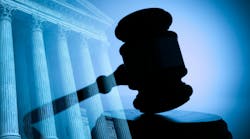Are You Prepared?
Sept. 11, 2001, saw the worst disaster committed on United States soil in history. Within hours of the first of four plane strikes, thousands were dead or injured, massive transportation infrastructures were shut down and some of the largest cities in the country became ghost towns.
Like all tragedies, the events of 9/11/01 seem to have raised more questions than answers. Many in the dental profession are asking themselves if they know what to do in the wake of a national disaster. Are they ready to step in to assist? If not, how and where can they learn preparedness? This tragedy showed the world that dentistry is a vital piece in the overall puzzle, according to an article in the March 2002 issue of AGD Impact.
The disasters made forensic dentistry a new area of interest for many dentists. Dental identification proved a reliable and inexpensive way to identify remains since teeth are the least subject to change over time. "Forensics was not one of my desires. But I felt an obligation to help," says Scott M. Dubowsky, DMD, FAGD, New Jersey Academy of General Dentistry member. Dr. Dubowsky closed his office for the first week following the events and learned everything he needed to know about the identification process.
"Dentistry has become an important part of the identification process, adding to the accuracy of DNA, fingerprints or visual identification" says Deputy Chief of Forensic Dentistry, Office of Chief Medical Examiners, City of New York, and past president of the Academy of General Dentistry, Howard S. Glazer, DDS, FAGD, FAAFS.
"People don't realize that forensic dentistry identifies from 60 to 75 percent of all the remains in a tragedy such as this," said James McGivney, DMD, private practitioner in St. Louis and creator of WinID software, which was used to help identify the victims involved in the New York tragedy and others across the country.
In these types of tragedies, dentists should be reminded that identifications can be made from a single tooth with a unique structure. So all forensic dentists ask that patient records be kept very detailed, X-rays labeled right and left and original documentation sent. Any insurance or referral information also needs to be included. And dentists should put their name and address on all patient records, since questions arise when looking at a person's file.
T
he terrorist attack also caused some Academy members to look beyond what is already offered to dentists, such as a course in basic triage. The Academy is offering a lecture, "Dental Responder Course: An Introduction to Field Management of Emergency Situations," at the Academy's annual meeting on July 6, 2002 in Honolulu. The course will show general dentists that they have the skills and scientific background to be important contributors to emergency response efforts. More information about the Academy's Annual Meeting can be found at www.agd.org, or by calling 1-888-243-3368, ext. 4339.
The March issue of AGD Impact examines the Sept. 11 tragedy in-depth, with insightful interviews from the people involved with the identification process. The full article, "Are you prepared" is available on the Academy of General Dentistry Web site, www.agd.org.
The Academy of General Dentistry is a non-profit organization of more than 37,000 general dentists dedicated to staying up-to-date in the profession through continuing education. A general dentist is the primary care provider for patients of all ages and is responsible for the diagnosis, treatment, management and overall coordination of services related to patient's oral health needs.

